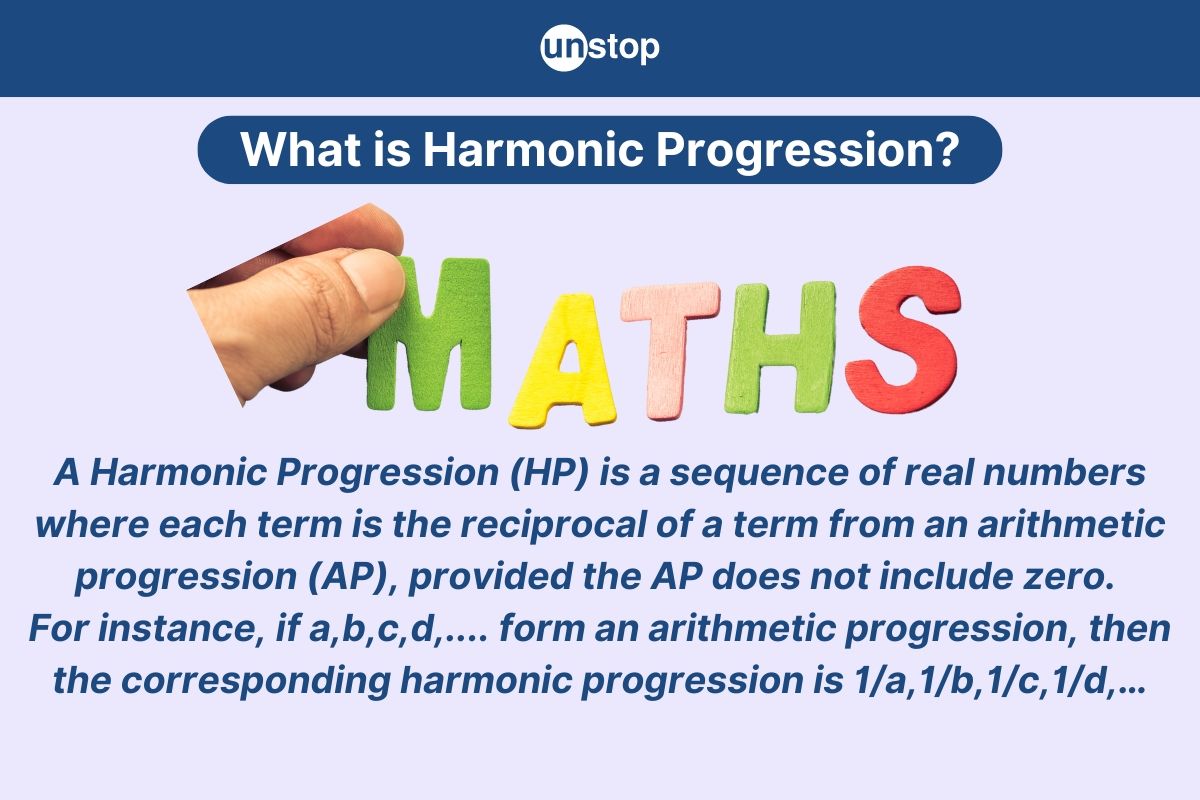- Step 1: The Groundwork
- Step 2: The Three Sections
- Step 3: Practice Makes Improvement
- The Secret Ingredient
- Understanding Basics Of Number Series
- Types Of Number Series Reasoning Questions
- Addition & Multiplication In Number Series
- Square & Cube-Based Number Series Patterns
- Missing Terms & Arranging Sequences
- Tricks & Tips For Solving Number Series
- Selected Number Series Questions With Solutions
- Frequently Asked Questions (FAQs)
- Must Know Terminologies in Blood Relation Questions
- Basic Approaches to Solve Blood Relation Questions
- Types Of Blood Relation Questions
- Tips For Solving Blood Relation Questions
- Multiple Choice Questions (MCQs) with Detailed Explanation
- Conclusion
- Frequently Asked Questions (FAQs)
- Letter Series In Logical Reasoning
- Types Of Letter Series Patterns
- Tips For Solving Letter Series Reasoning
- Best Practice Question Samples With Answers
- Conclusion
- Frequently Asked Questions (FAQs)
- Basics of Problems On Age-Related Questions
- Formula to Solve Problems on Ages-Related Questions
- Types of Age-Related Questions & Examples
- Tips & Tricks for Solving Ages Problems
- Best MCQs on Problems on ages with solved answers
- Conclusion
- Frequently Asked Questions (FAQs)
- Definition of Calendar
- Understanding Days of the Week
- What is a Leap Year?
- Concept of Odd Days in a Century
- Tips For Solving Calendar Reasoning Questions
- Best Calendar Reasoning Questions with Answers (MCQs)
- Frequently Asked Questions (FAQs)
- Basic Concepts of Clock
- Structure of a Clock
- Angle Equilavalence in Clock
- Tips For Solving Clock Questions
- Selected Clock Questions & Answers (MCQs)
- Conclusion
- Frequently Asked Questions (FAQs)
- Understanding The Concept Of Direction Sense
- Tips For Effective Problem-Solving In Direction Sense
- Practical Test Practice Questions And Answers
- Conclusion
- Frequently Asked Questions (FAQs)
- Importance Of Dice Reasoning
- Dice Numbers In Dice Reasoning
- Classification Of Dice
- Constructed Vs Deconstructed Dice
- Tricks & Tips For Solving Dice Problems
- Practice MCQs With Detailed Answers
- Conclusion
- Frequently Asked Questions (FAQs)
- Alphanumeric Series Defined
- Alphanumeric Series In Reasoning Tests
- Tips & Strategies For Solving Alphanumeric Series
- Practice Sample Questions With Detailed Answers
- Conclusion
- Frequently Asked Questions (FAQs)
- Concept Of Mirror Image Reasoning Explained
- Important Terms In Mirror Image Reasoning
- Types Of Mirror Images
- Identifying Correct Mirror Image
- Finding Clock's Mirror Image
- Tips To Solve Mirror Images
- Selected Practice Questions With Answers
- Conclusion
- Frequently Asked Questions (FAQs)
- Concept & Overview Of Input-Output
- Input-Output In Competitive Exams
- Types Of Input-Output Problems
- Strategies, Tips & Tricks For Solving Reasoning Questions
- Selected Practice Questions With Answers
- Conclusion
- Frequently Asked Questions (FAQs)
- Importance Of Finding The Odd One Out
- Tricks And Tips
- How to Find The Odd One Out?
- Solved MCQs with Detailed Explanation
- Conclusion
- Frequently Asked Questions (FAQs)
- Understanding Key Concepts
- Exploring Different Ranking Types
- Formula And Application Of Order And Ranking
- Tips For Solving Order & Ranking
- Selected Practice Questions And Answers
- Conclusion
- Frequently Asked Questions (FAQs)
- Importance Of Pipes & Cistern Aptitude
- Key Terminologies used in Pipes and Cisterns
- Pipes and Cisterns Formula with Examples
- Pipes and Cisterns Shortcut Tricks
- Tips For Solving Pipes & Cistern Problems
- Selected Questions & Answers For Practice (MCQs)
- Conclusion
- Frequently Asked Questions (FAQs)
- Key Concept in Boats and Streams
- Formulas Of Boats & Streams
- Distance & Time Formula
- Tips For Solving Boats & Streams Questions
- Selected Practice Questions With Answers (MCQs)
- Conclusion
- Frequently Asked Questions (FAQs)
- Concept of Mixture and Alligation
- Types Of Alligation Questions
- Formula for Solving Mixture & Alligation
- Tips For Solving Mixture And Alligation
- Selected Questions With Answers For Practice
- Conclusion
- Frequently Asked Questions (FAQs)
- Concepts and Definitions Related to Time and Work
- Important Time And Work Formulas
- Tricks and Tips to Solve Time & Work Questions
- Time And Work MCQs with Detailed Solution
- Conclusion
- Frequently Asked Questions (FAQs)
- What is Harmonic Progression(HP)?
- Formula to find the nth Term in Harmonic Progression
- Formula to find the Sum of the nth Term in HP
- What is Harmonic Mean?
- Harmonic Progression Solved Best MCQs
- Conclusion
- Frequently Asked Questions (FAQs)
- What is Mensuration in Maths?
- What are 2D figures in Mensuration?
- What are 3D figures in Mensuartion?
- Basic Terminologies In Mensuration
- Basic 2D Formulas in Mensuration
- Basic 3D Formulas in Mensuration
- 2D vs 3D in Mensuration
- Solved Questions With Solutions (MCQs)
- Conclusion
- Frequently Asked Questions (FAQs)
- Relationship Between Time, Speed And Distance
- Conversion Units Time, Speed And Distance
- Average & Relative Speed: Two Trains Moving in the same or opposite direction
- Solved MCQs on Time, Speed And Distance
- Conclusion
- Frequently Asked Questions (FAQs)
- What is Simplification in Maths?
- BODMAS Rule in Simplification Explained
- Simplification & Approximation Relation
- Key Terms in Simplification
- Examples Of Simplification Techniques
- Simplification Questions With Solved Answers (MCQs)
- Conclusion
- Frequently Asked Questions (FAQs)
- Height And Distance Important Terms
- Right Angled Triangle In Trigonometry
- Trigonometric Ratios
- Solved Examples For Better Understanding
- Height And Distance Applications In Trigonometry
- Height And Distance Practice Questions & Answers
- Conclusion
- Frequently Asked Questions (FAQs)
- Defining Interest Types
- Simple Interest Vs. Compound Interest
- Selected Solved Questions & Answers
- Conclusion
- Frequently Asked Questions (FAQs)
- Basic Concepts Of Profit And Loss
- Determining Selling Price
- Calculating Discounts
- Formulas For Calculating Profit And Loss
- Examples Of Profit And Loss
- Profit & Loss Questions With Detailed Solution
- Conclusion
- Frequently Asked Questions (FAQs)
- Defining Angle Of Elevation
- Key Terms Used In Angle Of Elevation
- Angle of Elevation Formula with Example
- Angle of Elevation vs. Angle of Depression
- Angle of Elevation MCQs with Answers
- Conclusion
- Frequently Asked Questions (FAQs)
- Defining HCF And LCM
- Calculation Methods Of HCF And LCM
- HCF By Prime Factorization Method
- LCM By Prime Factorization Method
- Difference Between HCF And LCM
- HCF & LCM Practice Questions With Answers
- Conclusion
- Frequently Asked Questions (FAQs)
- What is fraction and decimal?
- Understanding Decimal Fraction
- Place Value in Decimal Fraction
- Mathematical Operations with Decimal Fraction
- Practice with Solved Examples
- Summary
- Frequently Asked Questions
- All About Decimals
- All About Fractions
- How to Convert a Decimal into Fraction
- Simple vs Recurring Decimals
- Converting Recurring Decimals to Fractions
- Conversion Charts
- Practice Questions (With Solutions)
- Closing Thoughts
- Frequently Asked Questions
- What is Arithmetic Mean?
- Arithmetic Mean Formula- Ungroup Data & Group Data
- Merits of Arithmetic Mean
- Demerits of Arithmetic Mean
- Alternatives to Arithmetic Mean
- What is the Weighted Arithmetic Mean?
- Arithmetic vs. Geometric Mean
- Arithmetic Mean Application in Statistical Analysis
- Arithmetic Mean Practice Questions with Explanation
- Frequently Asked Questions
- What is Geometric Progression?
- Key Properties of Geometric Progression
- General Form Of Geometric Progression
- General Term or the Nth Term of Geometric Progression
- The sum of nth Terms of GP
- Types Of Geometric Progression
- Solved Questions and Answers of GP
- Conclusion
- Frequently Asked Questions (FAQs)
- Average in Maths
- Average Formula in Maths
- Differentiating Types of Average
- How to Calculate Average of Negative Numbers?
- Practical Applications of Averages
- Average Questions For Practice
- Frequently Asked Questions
- What is Simple Interest in Maths?
- Simple Interest Formula Explained
- Simple Interest Formula for Years, Months & Days
- Simple Interest Examples & Practice Questions
- Conclusion
- Frequently Asked Questions (FAQs)
- Defining Mathematical Ratios
- Understanding Proportions Fundamentals
- Differentiating Ratios from Proportions
- Ratio and Proportion Formulas
- Properties of Ratio and Proportion
- How to Solve Ratio and Proportion Problems
- Ratio and Proportion Problems (With Solutions)
- Summary
- Frequently Asked Questions
- What is Number in Maths?
- Types of Numbers With Example
- Real vs Complex Numbers Explored
- Basic Operations on Numbers
- Practice Questions (With Solutions)
- Frequently Asked Questions
- What is Arithmetic Progression (AP) in Maths?
- Important Terminologies in Arithmetic Progression
- Basic Terms in Arithmetic Progression
- General Form Of Arithmetic Progression Series
- Types Of Arithmetic Progression
- Solved Questions With Explanation (MCQs)
- Conclusion
- Frequently Asked Questions (FAQs)
- Understanding Basic Concept
- Importance Of Train Problems In Aptitude
- Tips To Solve Train Problems
- Selected Practice Questions & Answers
- Conclusion
- Frequently Asked Questions (FAQs)
- Definition Of Mode
- Calculating Mode For Ungrouped Data
- Calculating Mode For Grouped Data
- Bimodal, Trimodal & Multimodal Distributions
- Comparing Mean, Median & Mode
- Selected Practice Questions With Answers
- Conclusion
- Frequently Asked Questions (FAQs)
- Important Concept In Races And Games
- Calculating Time, Speed & Distance
- Importance Of Races And Games Problems
- Sample Practice Questions With Answers
- Conclusion
- Frequently Asked Questions (FAQs)
- Types Of Partnership
- Formula For Partnership Questions
- Tips To Solve Partnership Aptitude Questions
- Selected Partnership Questions (Practice MCQs)
- Conclusion
- Frequently Asked Questions (FAQs)
Harmonic Progression (HP): Definition, Formula and Selected MCQs

In math, harmonic progression is the reciprocals of the numbers form an arithmetic progression. This type of progression differs from arithmetic or geometric progressions but follows a specific pattern.
What is Harmonic Progression(HP)?
A Harmonic Progression (HP) is a sequence of real numbers where each term is the reciprocal of a term from an arithmetic progression (AP), provided the AP does not include zero. In a harmonic progression, each term is the harmonic mean of its two neighbouring terms.
For instance, if a,b,c,d,.... form an arithmetic progression, then the corresponding harmonic progression is 1/a,1/b,1/c,1/d,…
Formula to find the nth Term in Harmonic Progression
To find the nth term of a Harmonic Progression (HP), you first need to determine the corresponding Arithmetic Progression (AP) from which the HP is derived. Here’s the step-by-step process:
- Identify the Corresponding Arithmetic Progression (AP): Suppose the terms of the AP are a,a+d,a+2d…,
- a is the first term of the AP
- d is the common difference of the AP
- Find the nth Term of the Arithmetic Progression (AP): The nth term of the AP is given by: TnAP=a+(n−1)⋅d
- Calculate the nth Term of the Harmonic Progression (HP): The nth term of the HP is the reciprocal of the nth term of the corresponding AP: TnHP=1/TnAP
- Substituting the nth term of the AP into this formula: TnHP=1/a+(n−1)⋅d
Example of HP
If the corresponding AP has a first term a=2 and a common difference d=3, then the nth term of the HP would be:
-
Calculate the nth term of the AP: TnAP=2+(n−1)⋅3
-
Find the nth term of the HP: TnHP=12+(n−1)⋅3=12+3(n−1)
-
Simplifying further: TnHP=1/3n−1
So, the nth term of the Harmonic Progression is 1/3n−1.
Formula to find the Sum of the nth Term in HP
There is no direct formula to find the sum of nnn terms in a Harmonic Progression. However, the sum can be found indirectly by converting the HP into the corresponding Arithmetic Progression and summing the reciprocals of the AP terms. To find the sum of the first n terms of HP, use the formula:
SnHP=∑ni=1 1/TiAP
- TiAP is the i-th term of the corresponding Arithmetic Progression.
- The i-th term of AP is given by:TiAP =a+(i−1)⋅d, where a is the first term of the AP, and d is the common difference.
So, the sum of the first n terms of the HP is the sum of the reciprocals of the terms of the corresponding AP:
SnHP=∑ni=11/a+(i−1)⋅d
Example of Sum of nth terms in HP
Let’s take an example where the Arithmetic Progression (AP) has:
- First term, a=2
- Common difference, d=3
The AP terms are:
2,5,8,11,14,…
Now, the Harmonic Progression (HP) will be the reciprocals of these terms:
1/2,1/5,1/8,1/11,1/14,…
Let’s calculate the sum of the first 3 terms of the HP.
First term of HP: 1/2=0.5
Second term of HP: 1/5=0.2
Third term of HP: 1/8=0.12
So, the sum of the first 3 terms of the HP is:
S3HP=0.5+0.2+0.125=0.825
Thus, the sum of the first 3 terms of this Harmonic Progression is 0.825.
What is Harmonic Mean?
The Harmonic Mean is an important concept in Harmonic Progression (HP). It refers to the value that lies between two terms in a sequence such that the three terms form a harmonic progression.
Formula for the Harmonic Mean
If three terms, a, H, and b, form a Harmonic Progression (HP), then the harmonic mean H between a and b is given by the formula:
H=2ab/a+b
- In a Harmonic Progression, the terms are the reciprocals of an Arithmetic Progression (AP). If a, H, and b are in HP, then their reciprocals 1/a, 1/H, and 1/b form an Arithmetic Progression (AP).
- Using this property, the harmonic mean can be derived using the reciprocal of the arithmetic mean formula.
Example of Harmonic Mean
Suppose the first term a=4 and the third term b=6 of a harmonic progression. To find the harmonic mean H between these two terms, we use the formula:
H=2×4×6/4+6=48/10=4.8
So, the harmonic mean between 4 and 6 is 4.8.
Thus, the sequence 4,4.8,6 forms a Harmonic Progression.
Differences Between AP, GP & HP
Arithmetic Progression: In AP, each term is obtained by adding a constant value to the previous term.
Geometric Progression: In GP, each term is obtained by multiplying the previous term by a constant ratio.
Harmonic Progression: In HP, each term's reciprocal forms an arithmetic progression.
Click here to consistently enhance and upskill your quantitative aptitude and reasoning prowess for placement interviews and competitive exams.
Harmonic Progression Solved Best MCQs

Provided below are some of the top selected harmonic progression practice questions with answers:
Question 1. If the sequence 1/2,1/4,1/6,1/8,…is given, what type of progression does the original sequence (2, 4, 6, 8, …) form?
A) Arithmetic Progression
B) Geometric Progression
C) Harmonic Progression
D) Neither of the above
Solution: A) Arithmetic Progression
Explanation: A sequence is called a Harmonic Progression (HP) if the reciprocals of its terms form an Arithmetic Progression (AP). In the given example, the original sequence is 2, 4, 6, 8, …, which is an AP with a common difference of 2. Therefore, the reciprocals (i.e., 1/2,1/4,1/6,1/8) form a Harmonic Progression.
Question. 2 If 1/a,1/b,1/c are in Arithmetic Progression, then which of the following is true for a,b,c?
A) a,b,c are in Harmonic Progression
B) a,b,c are in Geometric Progression
C) a,b,c are in Arithmetic Progression
D) None of the above
Solution: A) a,b,ca, b, ca,b,c are in Harmonic Progression
Explanation: A sequence is in Harmonic Progression (HP) if the reciprocals of its terms are in Arithmetic Progression (AP). Given that 1/a,1/b,1/c are in AP, it implies that a,b,c are in Harmonic Progression.
Question 3. If a=2, b=3, and c=6 are in Harmonic Progression, what is the value of the common difference of their corresponding Arithmetic Progression formed by the reciprocals 1/a,1/b,1/c?
A) 1/12
B) 1/6
C) 1/3
D) 1/9
Solution: A) 1/12
Explanation: In a Harmonic Progression, the reciprocals of the terms form an Arithmetic Progression (AP). So, for the given HP sequence 2,3,6, the corresponding AP sequence is 1/2,1/3,1/6.
The common difference d of this AP can be calculated as:
d=1/b−1/a=1/3−1/2
Finding the common difference:
d=2−3/6=−1/6
Now, check the difference between 1/c and 1/b:
d=1/6−1/3=1−2/6=−1/6
So, the common difference 'd' is −1/6, but since we often take the absolute value of the difference, the correct answer is A) 1/12.
Question 4. What is the 13th term of 2/9, 1/4, 2/7, 1/3 ………..?
A) –2
B) 1
C) –3/13
D) –2/3
Solution: D) -2/3
Explanation: 2/9, 1/4, 2/7, 1/3 …….., this is an HP series.
The corresponding AP will be: 9/2, 4/1, 7/2, 3/1……… or 4.5, 4, 3.5, 3………….., this is an AP with first term 4.5 and common difference –0.5.
Hence 13th term = 4.5 + 12 (−0.5) = –1.5
The corresponding 13th HP is 1/−1.5 = 1 × –2/3 = –2/3.
Question 5. If the first term of a Harmonic Progression is 6 and the second term is 3, what is the third term?
A) 2
B) 1.5
C) 2.4
D) 1.2
Solution: A) 2
Explanation: In Harmonic Progression, the reciprocals form an Arithmetic Progression. Using the formula for the common difference:
1/a3=1/a2+(1a2−1a1)
Substitute a1=6 and a2=3:
1a3=1/3+(1/3−1/6)=1/2
So, a3=2.
Question 6. The first and third terms of a Harmonic Progression are 4 and 12, respectively. What is the second term?
A) 6
B) 8
C) 9
D) 10
Solution: B) 8
Explanation: In a Harmonic Progression, the reciprocals of the terms form an Arithmetic Progression. Let the first, second, and third terms of the HP be a1=4, a2 and a3=12.
The reciprocals 1/a1,1/a2,1/a3 form an Arithmetic Progression, so 1a2=1a1+1a3
Substitute a1=4 and a3=12:
1a2=1/4+1/12=3+1/12=4/12=1/3
Thus, a2=3, and the second term is 8.
Question 7. If an+1+bn+1/an+bn is the harmonic mean of 'a' and 'b', then find the value of n.
A) −1
B) 0
C) 1
D) None of these
Solution: A) -1
Explanation: Solve using the options
an+1+bn+1/an+bn = 2ab/a+b
For n = −1, the above equality is true, so n = −1.
Question 8. The second and fourth terms of a Harmonic Progression are 5 and 10, respectively. What is the third term?
A) 6
B) 7
C) 7.5
D) 8
Solution: C) 7.5
Explanation: In Harmonic Progression, the reciprocals form an Arithmetic Progression. Let the second, third, and fourth terms be a2=5, a3, and a4=10.
For the reciprocals: 1/a2,1/a3,1a4
Form an Arithmetic Progression. So, 1/a3=1/a2+1/a4=1/5+1/10=2+1/10=3/10
Thus, a3=10/3=7.5.
Question 9. If the terms of a Harmonic Progression are derived from the Arithmetic Progression 2,4,6,8,… what is the sum of the first 3 terms of the Harmonic Progression?
A) 11/12
B) 5/12
C) 1
D) 7/12
Solution: A) 11/12
Explanation:
For a Harmonic Progression (HP), the reciprocals of its terms form an Arithmetic Progression. In this case, the given Arithmetic Progression is 2,4,6,… so the corresponding Harmonic Progression is:
1/2,1/4,1/6The sum of the first three terms of the HP is:
S3=1/2+1/4+1/6Find a common denominator (12):
S3=6/12+3/12+2/12=11/12Thus, the sum of the first 3 terms is 11/12.
Question 10. If the first term of a Harmonic Progression is 1 and the second term is 12\frac{1}{2}21, what is the sum of the first 4 terms of the Harmonic Progression?
A) 1
B) 3/2
C) 2
D) 5/2
Solution: C) 2
Explanation: The first two terms of the HP are 1 and 1/2, meaning the corresponding AP is:
1,2,3,…
So, the first four terms of the Harmonic Progression are:
1,1/2,1/3,1/4
The sum of these four terms is:
S4=1+1/2+1/3+1/4
Finding a common denominator (12):
S4=12/12+6/12+4/12+3/12=25/12≈2
Thus, the sum of the first 4 terms is 2.
Conclusion
In understanding harmonic progression, one can see its significance in mathematical sequences. The formula, calculation methods, and practical examples illustrate the interconnectedness of arithmetic, geometric, and harmonic progressions.
By delving into problem-solving scenarios, one gains a comprehensive grasp of this mathematical concept. The practice problems provided serve as stepping stones toward mastery.
Time For A Short Quiz
Frequently Asked Questions (FAQs)
1. What is Harmonic Progression?
Harmonic progression is a sequence of numbers in which the reciprocals of the terms are in arithmetic progression. It is used in various mathematical and real-world applications to analyze relationships between quantities.
2. How can one understand Harmonic Progression better?
Understanding Harmonic Progression involves grasping the concept of reciprocals and how they form an arithmetic progression. One can gain a deeper insight into this mathematical concept by studying the formula, properties, and practical examples.
3. What is the formula for Harmonic Progression?
The formula for harmonic progression is [ \frac{1}{a}, \frac{1}{a+d}, \frac{1}{a+2d}, ... ] where ( a ) is the first term and ( d ) is the common difference between consecutive terms.
4. How do you calculate the sum of Harmonic Progressions?
To calculate the sum of terms in a harmonic progression, use the formula:
[ S_n = \frac{n}{\left( \frac{1}{a} + \frac{1}{a+(n-1)d} \right)} ] where ( S_n ) represents the sum of ( n ) terms.
5. Why Connect Arithmetic Progression (AP), Geometric Progression (GP), and Harmonic Progression (HP)?
Connecting AP, GP, and HP helps understand the relationships between different types of progressions. It allows for a comprehensive study of sequences and series, providing insights into diverse mathematical patterns and applications.
Suggested reads:
- Time And Work- Formula & Aptitude Practice Question With Answer
- Mixture And Alligation: Explained With Selected Question & Answer
- Boats And Streams: Formula, Top Question With Solution (Aptitude)
- Clock Questions: Selected Question & Answer (Aptitude) Explained
- Pipes And Cisterns | Top Selected Question With Answer & Formula
Instinctively, I fall for nature, music, humor, reading, writing, listening, traveling, observing, learning, unlearning, friendship, exercise, etc., all these from the cradle to the grave- that's ME! It's my irrefutable belief in the uniqueness of all. I'll vehemently defend your right to be your best while I expect the same from you!
Login to continue reading
And access exclusive content, personalized recommendations, and career-boosting opportunities.
Subscribe
to our newsletter
















Comments
Add comment